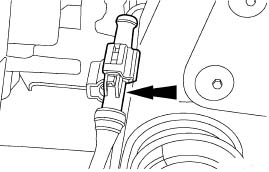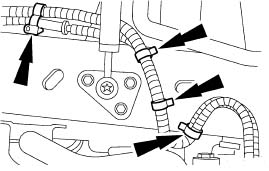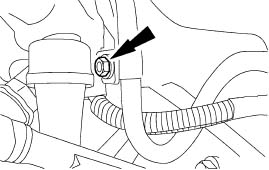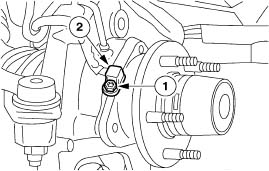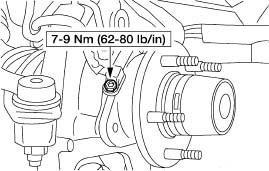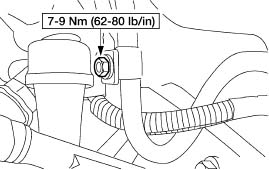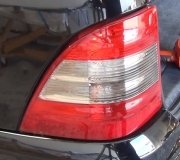Hi Jim;
I have a feeling the ((ABS)) "sensor" just might be the problem.
It could possibly be the "anti-lock brake control module" but for some reason I doubt it. I can send you a step by step procedure to remove the sensor if you want, just let me know and I will send it right to you. It is a guessing game but I think this is the problem causing the chimes and the ((ABS)) light on in the instrument cluster.
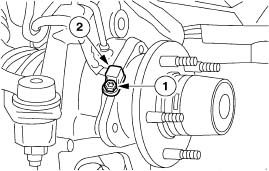
(1) ABS Sensor hold down bolt.
(2) Front anti-lock brake sensor
Here is some information on the system itself.
When the brakes are applied, fluid is forced from the brake master cylinder outlet ports to the "hydraulic control unit" (HCU) inlet ports. This pressure is transmitted through three normally open solenoid valves contained inside the HCU through the outlet ports of the HCU to each wheel.
If the anti-lock brake control module senses a wheel is about to lock, based on anti-lock brake sensor data, it closes the normally open solenoid valve for that circuit. This prevents any more fluid from entering that circuit.
The anti-lock brake control module then looks at the anti-lock brake sensor signal from the affected wheel(s) again.
If that wheel(s) is still decelerating, it opens the closed solenoid valve for that circuit to further reduce hydraulic pressure trapped in the line.
Once the affected wheel comes back up to speed, the anti-lock brake control module returns the solenoid valves to their normal condition allowing fluid flow to the affected brake.
The anti-lock brake control module monitors the electromechanical components of the system.
A malfunction in the anti-lock brake system will cause the anti-lock brake control module to shut off or inhibit the system. However, normal power-assisted braking remains.
>>>Malfunctions are indicated by the yellow ABS warning indicator in the instrument cluster<<<.
The anti-lock brake system is self-monitoring. When the ignition switch is turned to the RUN position, the anit-lock brake control module will carry out a
>>>preliminary self-check on the anti-lock electrical system indicated by a three-second illumination of the yellow ABS warning indicator in the instrument cluster. <<<
During vehicle operation, including normal and anti-lock braking, the anti-lock brake control module monitors all electrical anti-lock functions and some hydraulic operations.
Each time the vehicle is driven, as soon as vehicle speed reaches approximately 20 km/h (12mph), the anti-lock brake control module turns on the pump motor for approximately one-half second. At this time, a mechanical noise may be heard. This is a normal function of the self-check by the anti-lock brake control module.
Pedal pulsation coupled with noise while braking on loose gravel, bumps, wet or snowy roads is normal and indicates correct functioning of the anti-lock brake system.
I hope this information helped. Again, if you want the step by step sensor removal instructions just let me know.
Rick
SPONSORED LINKS
Sunday, November 22nd, 2009 AT 12:08 AM

